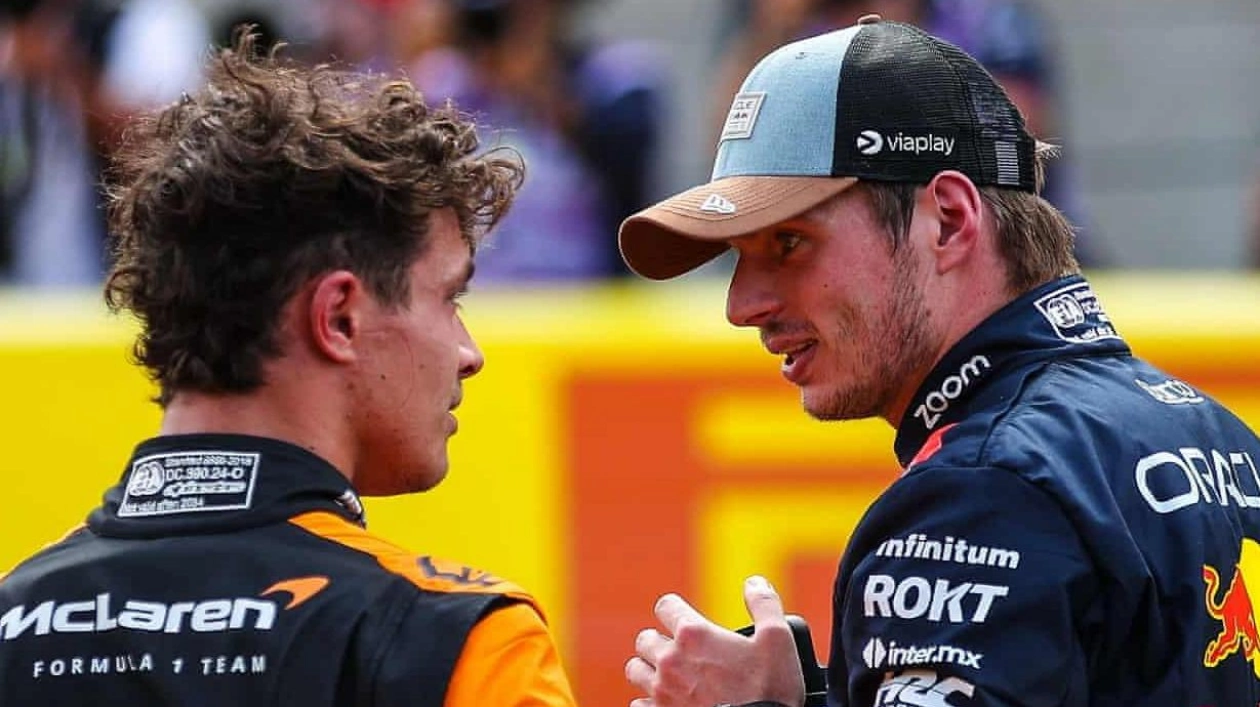As the dust continues to swirl around the controversy surrounding Max Verstappen's defense against Lando Norris's attempted overtake at the US Grand Prix last Sunday, the two drivers are set to clash again this weekend in Mexico. The debate sparked by their encounter in Austin remains highly contentious and requires urgent attention. For Formula One to maintain a thrilling championship battle between these two rivals, exploiting ambiguous rules, causing confusion, and leading to accusations of inconsistent stewarding will only hinder the sport.
During the final 10 laps in Texas, Verstappen and Norris, currently separated by 57 points in the title race with five races left, engaged in a thrilling duel at the Circuit of the Americas. The pivotal moment occurred when Norris attempted to pass Verstappen on the outside of turn 12. As Norris approached the corner, Verstappen took the inside line, forcing Norris wide and causing both cars to go off the track. Norris managed to take the position but was subsequently handed a five-second penalty for gaining an advantage by going off the track. Verstappen was not penalized, which cost Norris third place and crucial championship points.
To clarify, according to the rules applied by the stewards, Verstappen did not commit any wrongdoing. The stewards imposed the penalty in line with the FIA's Driving Standards Guidelines document. This document serves as a reference for drivers, officials, and stewards and was created in response to a request from Formula One drivers. The guidelines focus on who is in front at the apex of the corner. In Austin, Verstappen was ahead at the apex, giving him precedence. For Norris to complete the pass, he had to do so without illegally gaining an advantage by going off the track. However, if Verstappen intentionally entered the corner too fast, knowing he would be ahead at the apex but also that he would go wide, or deliberately forced Norris off the track, Norris had no choice but to either back off, crash, or go wide and face a penalty.
While this tactic was entirely legal, it understandably drew significant criticism. Norris was understandably frustrated, and he was not alone. Martin Brundle pointed out that drivers are aware of how the guidelines are interpreted and may deliberately exploit the system. Former world champion Jenson Button also bluntly addressed this issue with Red Bull team principal Christian Horner, stating, “It seems your driver is very good at understanding the regulations. And the problem [is] that we need better regulation of what is OK and what isn’t.”
Horner and Verstappen's defense that they were following the rules only highlighted the need for a re-examination of these rules. Verstappen has faced similar situations before, notably when he defended against Lewis Hamilton at Brazil in 2021. Since then, he has effectively turned defensive positions into advantageous ones. In the Austin race, Norris was marginally ahead as they approached turn 12, but by late-braking and taking the apex, Verstappen was considered the leading car, even though he knew he had no chance of staying on the track. This scenario makes almost any attempt to pass on the outside nearly impossible without facing punishment. This dilemma urgently requires a solution.
The stewards faced criticism for their decisions, which were not helped by the inconsistencies involved. Oscar Piastri received a penalty in Saturday's sprint race after pushing Pierre Gasly wide at the same corner under similar circumstances, but Piastri managed to stay on the track. George Russell was also penalized for pushing Valtteri Bottas wide at turn 12. The stewards adhered to the guidelines, but Piastri expressed frustration and confusion, noting, “I think my incident and Lando and Max’s looked very similar with the opposite penalties. So, I’m sure we’ll have some questions.”
Discussions on this topic are ongoing at the FIA, and it is expected to be raised at the drivers' briefing in Mexico. However, Martin Brundle's assessment, as a former driver with over a decade of racing experience and a career in analysis and commentary, may be the most concerning. He stated, “As far as I’m concerned, the six-page guidelines, which have been signed off by the FIA, the drivers’ association and the teams, are a blueprint to dissuade overtaking, especially around the outside.”
Source link: https://www.theguardian.com






